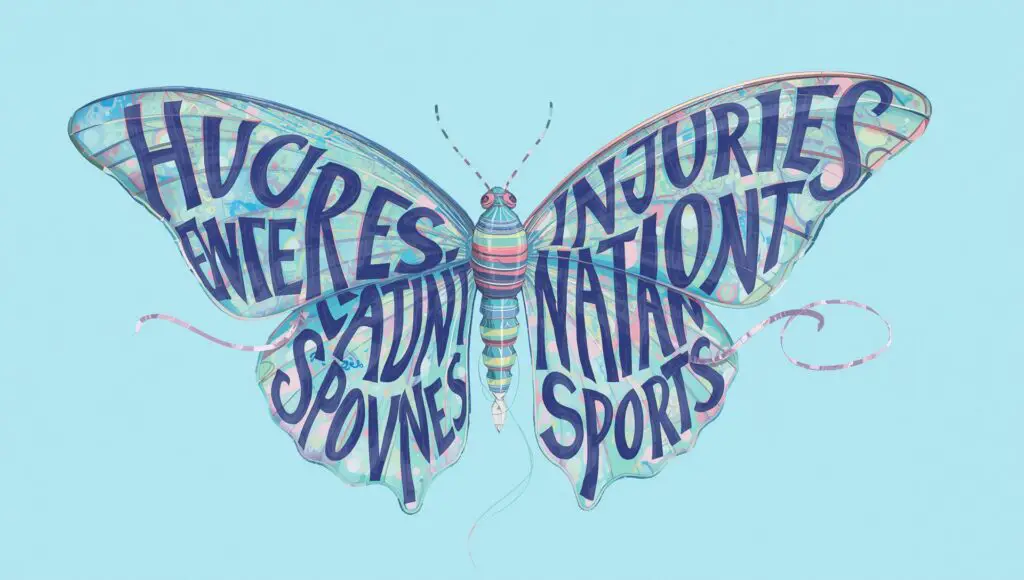Sports in the world stage are a show of talent, passion, and commitment. From football and cricket to tennis, athletics, and combat sports, athletes strain their limits to bring glory to their nations. However, the intensity of modern-day sports has also led to a substantial surge in injuries. In 2025, injuries in international sports remain a major concern—impacting player careers, redefining tournaments, and even altering the future of entire teams.
This article discusses the most prevalent injuries in sports, how they effect international competitions, the latest medical and technological remedies, and what the future holds for injury prevention.

The international sports calendar in 2025 is busier than ever, with football leagues overlapping worldwide competitions, tennis players enduring protracted seasons, and cricketers competing in back-to-back series. This crowded schedule means athletes are under enormous physical and mental strain, often leading to overuse problems.
According to recent sports medicine data, hamstring strains, ACL tears, concussions, and stress fractures remain the most frequent injuries across top-level sports. For instance:
- Football (Soccer): High-speed sprints and rapid direction changes make hamstring and knee injuries common. Major names missing competitions due to ACL rupture have changed the balance in FIFA and UEFA events.
- Cricket: Fast bowlers are prone to back and shoulder stress fractures, while batsmen typically suffer wrist and elbow ailments owing to repetitive strain.
- Tennis: Shoulder impingements, wrist difficulties, and hip injuries are frequent among players competing over hard and clay courts in demanding schedules.
- Combat Sports (UFC/Boxing): Concussions, face fractures, and ligament damage continue to dominate the news. These injuries don’t simply harm athletes but also impact fan involvement, team plans, and tournament outcomes.

High-Profile Injury Cases in 2025
This year has already seen some international stars sidelined:
- In football, important players from Europe’s best clubs missed vital UEFA Champions League knockout stages due to ACL injuries. The absence of star forwards impacted tactical approaches for managers.
- Cricket World Cup 2025 preparations were rattled when many fast bowlers from Australia and India experienced back problems, prompting countries to reconsider squad depth.
- Tennis Grand Slams witnessed withdrawals of top seeds owing to repeated hip and shoulder injuries, sparking arguments on whether the tour calendar needed revision.
- In the UFC, rising star injuries delayed title fights, revealing how fragile momentum can be in combat sports. Such stories demonstrate how a single injury can transform the narrative of whole tournaments.
Economic and Psychological Impact
The impact of injuries in international sports is not restricted to the field. The financial costs are astounding. Clubs and federations spend millions annually on medical treatments, operations, and rehabilitation. Sponsorship deals and broadcasting earnings can also take a hit when star athletes are absent.
For athletes themselves, injuries often lead to mental health struggles. Being sidelined produces worry, dread of losing form, or even the question of professional longevity. Sports psychologists in 2025 highlight the importance of mental resilience during recovery, mixing therapeutic sessions with physical rehabilitation.
Economic and Psychological Impact
Thankfully, the fight against injuries is evolving. Modern sports are increasingly reliant on technology and medical science to avoid dangers and accelerate recovery. Some major trends in 2025 include:
- Wearable Technology — Smart sensors and AI-powered trackers now monitor athlete effort, predicting fatigue levels and injury risks before they occur.
- Regenerative Medicine — Stem cell therapy, platelet-rich plasma (PRP) injections, and improved physiotherapy techniques are helping athletes recover faster from muscle rips and joint damage.
- Virtual Reality (VR) Rehab – Injured athletes can recreate match circumstances in VR, keeping their reflexes sharp even during downtime.
- Customized Training Programs — AI-driven platforms assess biomechanics, allowing trainers to develop tailored training plans that reduce overuse injuries. These improvements mean recovery periods are shortening, and some athletes are even returning stronger than before.

Preventive Strategies: Building a Safer Future
While therapy is necessary, prevention remains the ultimate goal. International teams and federations are using comprehensive approaches:
- Load Management: Carefully monitoring player participation to avoid burnout. * Nutrition & Hydration: Ensuring optimal muscle recovery and joint health with carefully tailored diets.
- Sports Psychology: Preparing players mentally to deal with pressure, stress, and recovery challenges. * Rule Changes: Governing bodies are altering rules to prevent harmful collisions in football, lower concussion risks in rugby, and increase player safety throughout contact sports.
The Human Side of Injuries
Behind every injury lies a narrative of agony, strength, and hope. Fans worldwide often witness their favorites battling back stronger. Legendary comebacks—from footballers returning after career-threatening ligament tears to tennis players collecting championships post-surgery—serve as incentive for younger athletes.
Athletes openly sharing their recovery journeys on social media in 2025 has also established greater connections with fans. These stories humanize sports, reminding us that even superstars face disappointments and hardships.
Conclusion: A Balancing Act
Injuries in international sports will always be part of the game. However, 2025 shows a potential future when technology, medicine, and psychology converge to safeguard athletes better than ever. Still, the balance lies in ensuring that entertainment and competition do not come at the cost of long-term health.
For viewers, injuries may influence outcomes, but they also emphasize the courage of athletes who fight their way back. As international sports advance, the objective is not to eradicate injuries totally but to reduce their frequency, speed up recovery, and protect the human spirit at the heart of every game.



